使用 WinForm 寫一個字串反轉的範例 :
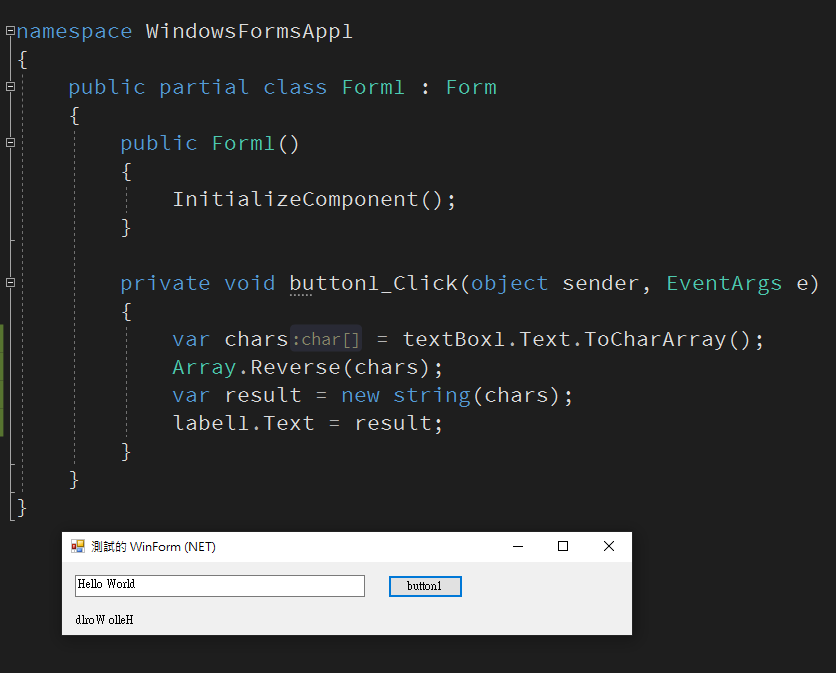
新增 WPF 專案,在畫面建立三個控制項 :
- TextBox
- Button
- TextBlock
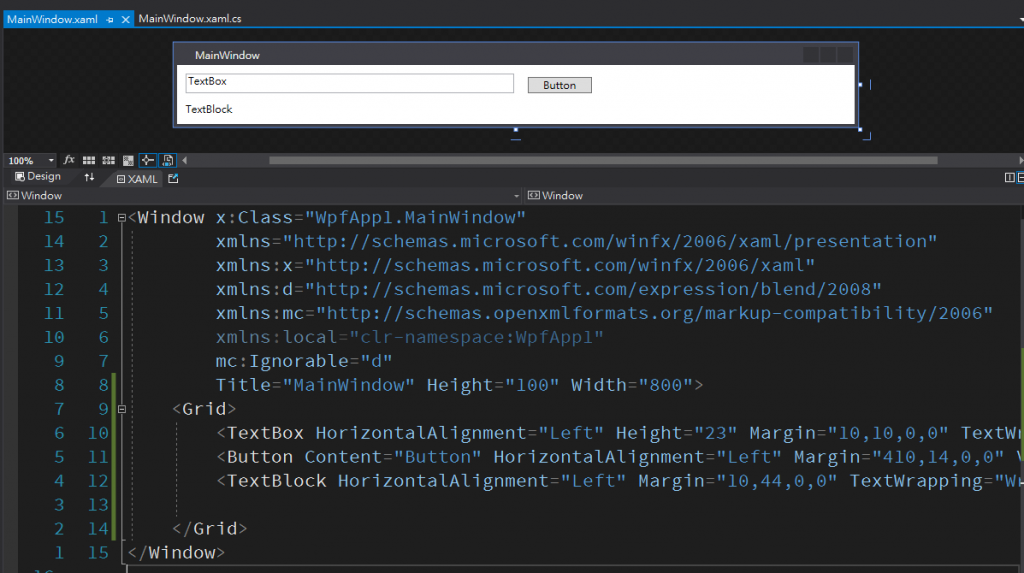
使用 ViewModel
建立 ViewModel
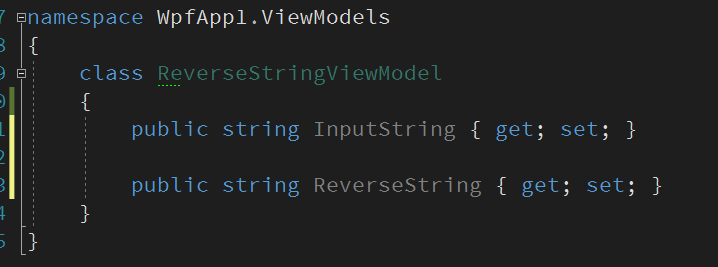
WPF 使用 Window.DataContext 將 ViewModel 繫結到 View
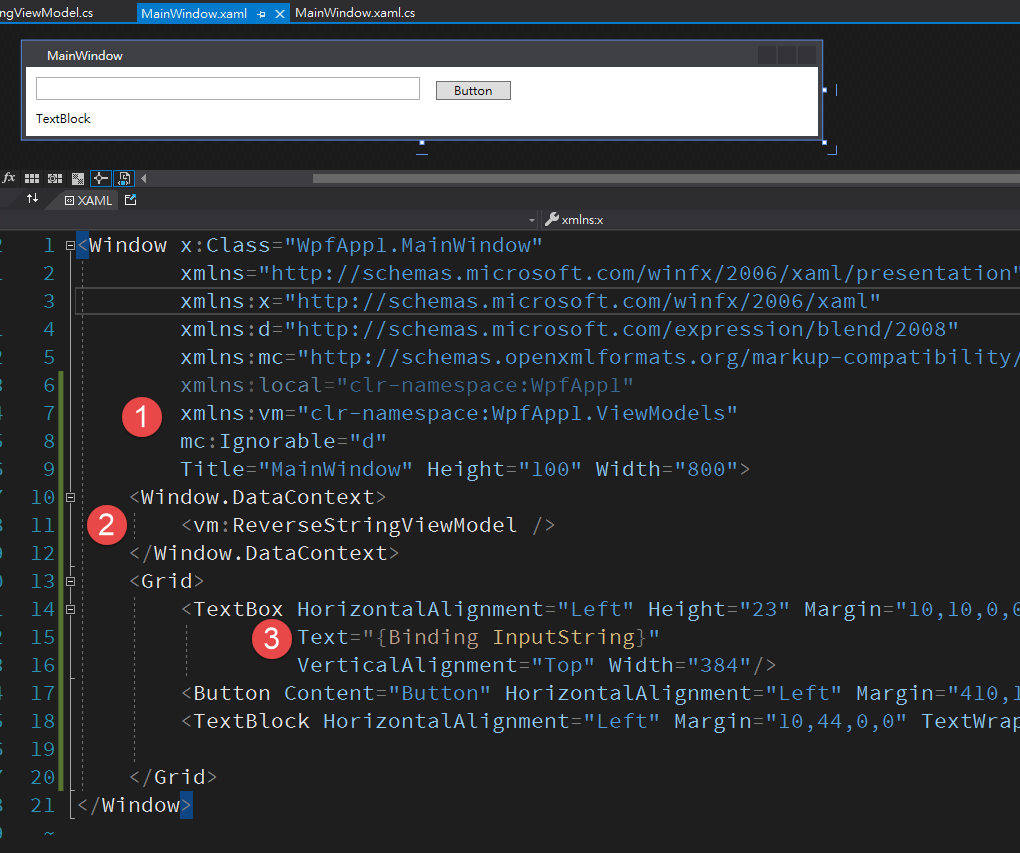
- 因為 ReverseStringViewModel 的 namespace 在 WpfApp1.ViewModels 底下, 所以創建了一個 xmlns:vm 指向該 namespace
- Window.DataContext 設定 DataContext 的 ViewModel
- 在 TextBox 使用 Binding 繫結 ViewModel 的屬性
為了方便識別,在 TextBlock 也使用 {{Binding InutString}}
測試的時候可以發現,只有觸發按鈕的時候,才會呼叫寫回資料到 ViewModel

INotifyPropertyChanged
為了讓資料可以即時更新,需要讓 ViewModel 繼承實作 INotifyPropertyChanged
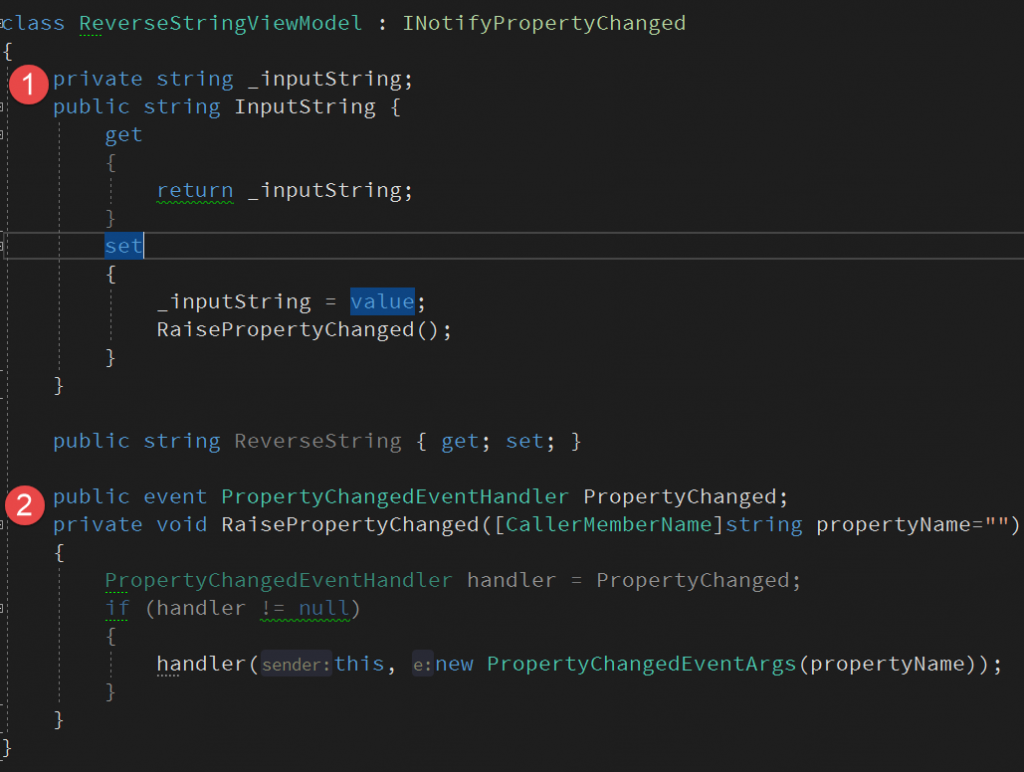
完成之後,回到 Binding 的地方,增加一個屬性 UpdateSourceTrigger=PropertyChanged
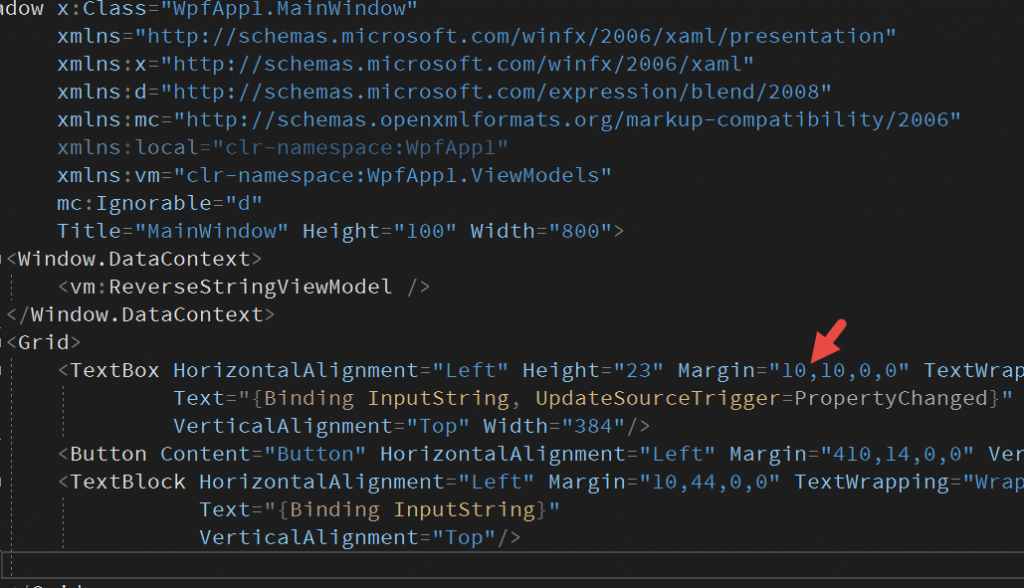
此時畫面輸入值的時候,底下的 TextBlock 也會跟著更新

ICommand
在 WPF 可以使用 WinForm 的 Click 事件,但為了可以讓他與介面分離,實作到 ViewModel ,提供了 ICommand 介面
先修正 ViewModel 的 ReverseString 與畫面的 TextBlock 改 Binding ReverseString
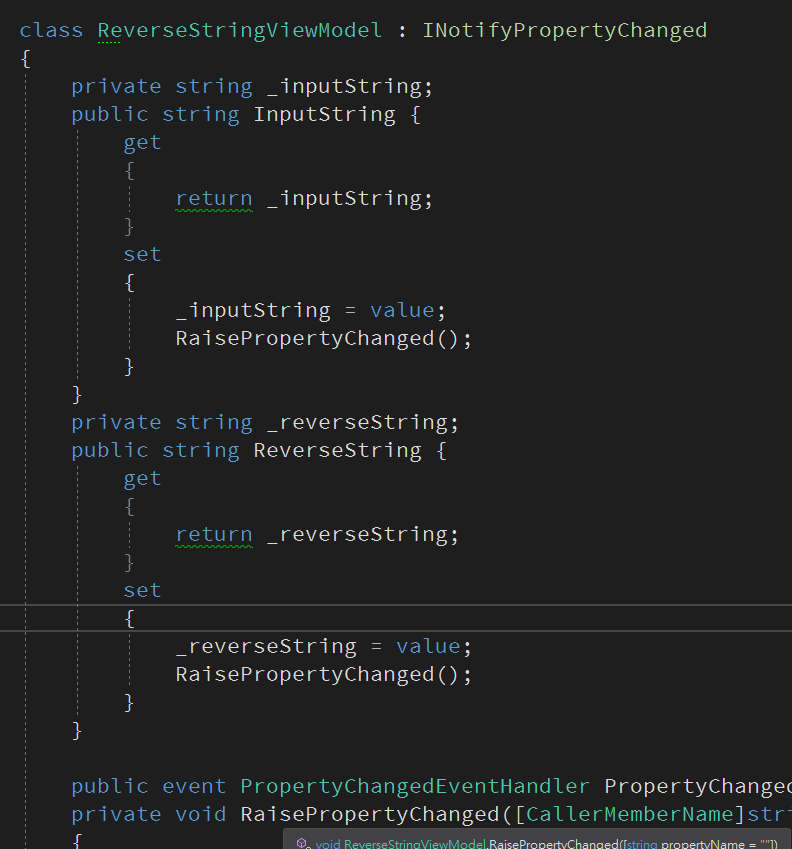

ICommand 需要兩個方法,但如果只為了這功能,每個 ICommand 都要繼承並實作一個 xxxComand 其實很費工,所以通常會建立一個 RelayCommand
RelayCommand 有各種版本
來源 : https://www.c-sharpcorner.com/UploadFile/20c06b/icommand-and-relaycommand-in-wpf/
public class RelayCommand : ICommand
{
private Action<object> execute;
private Func<object, bool> canExecute;
public event EventHandler CanExecuteChanged
{
add { CommandManager.RequerySuggested += value; }
remove { CommandManager.RequerySuggested -= value; }
}
public RelayCommand(Action<object> execute, Func<object, bool> canExecute = null)
{
this.execute = execute;
this.canExecute = canExecute;
}
public bool CanExecute(object parameter)
{
return this.canExecute == null || this.canExecute(parameter);
}
public void Execute(object parameter)
{
this.execute(parameter);
}
}使用 Command
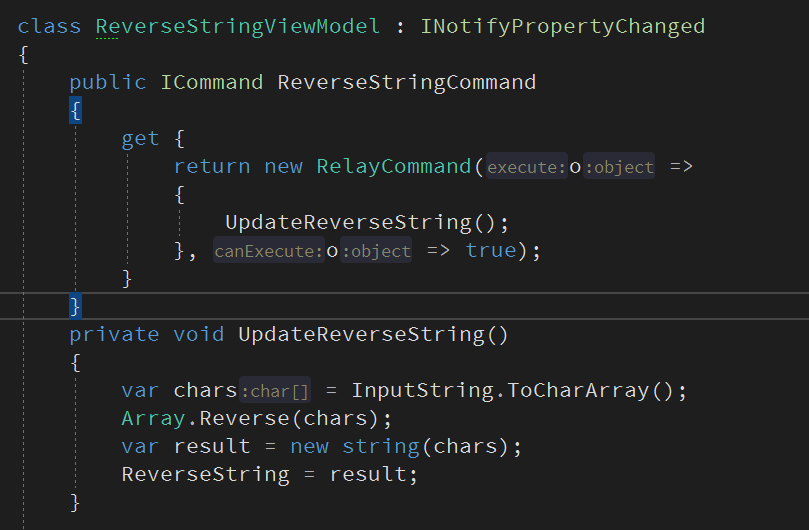
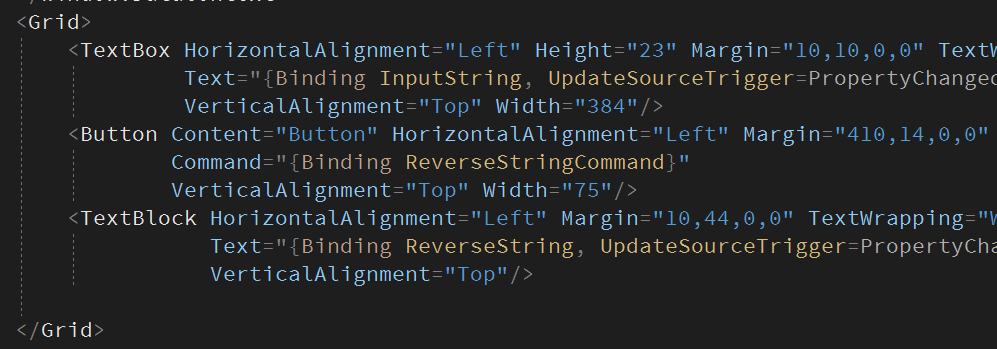
執行結果 :

參考 :
https://www.c-sharpcorner.com/UploadFile/20c06b/icommand-and-relaycommand-in-wpf/
http://blog.sanc.idv.tw/2011/12/wpf-mvvm.html
